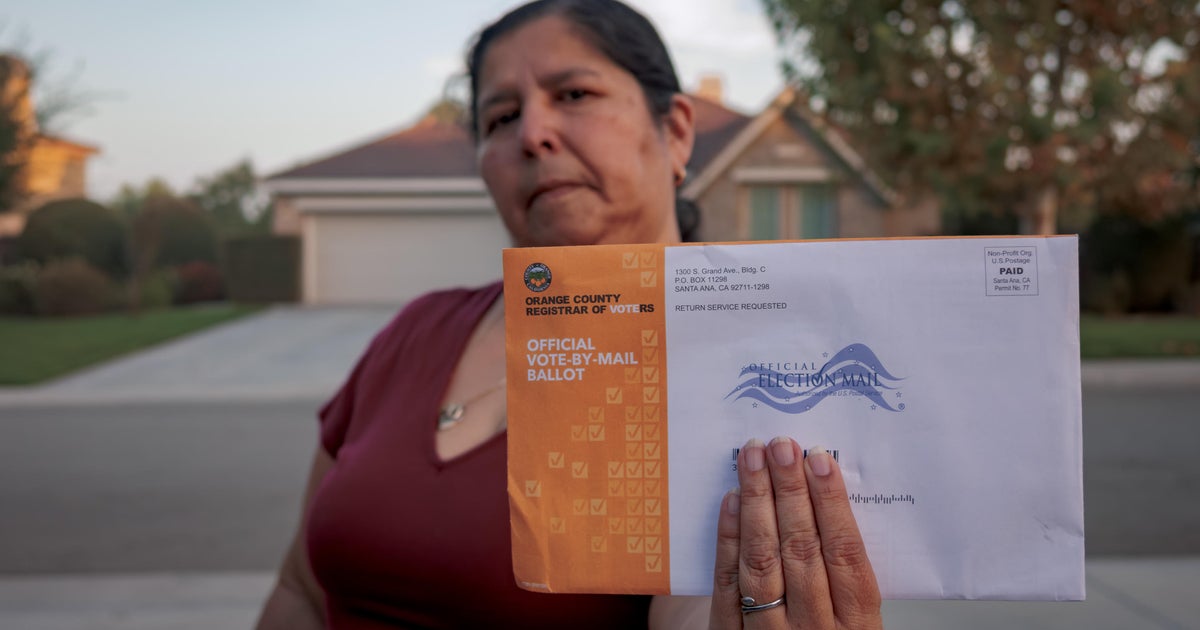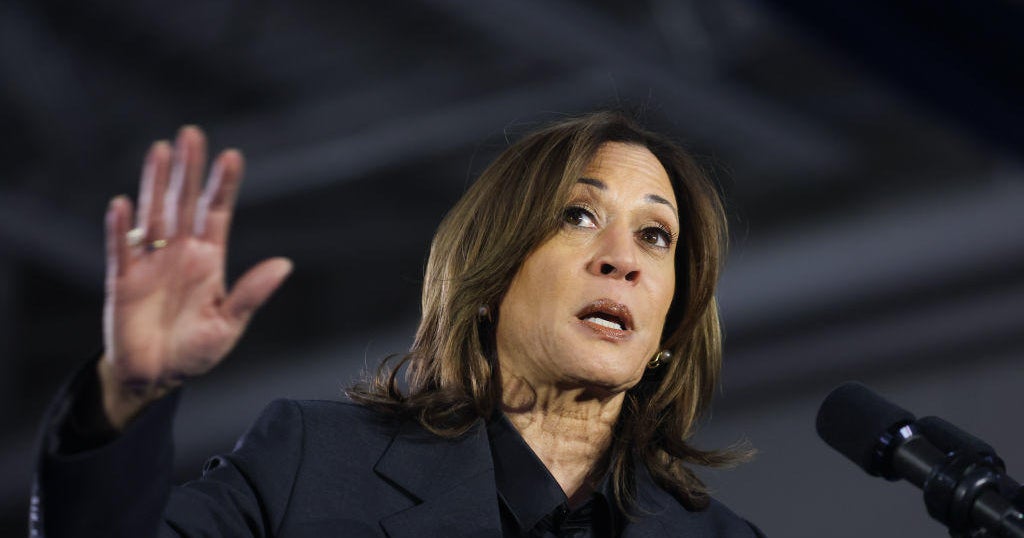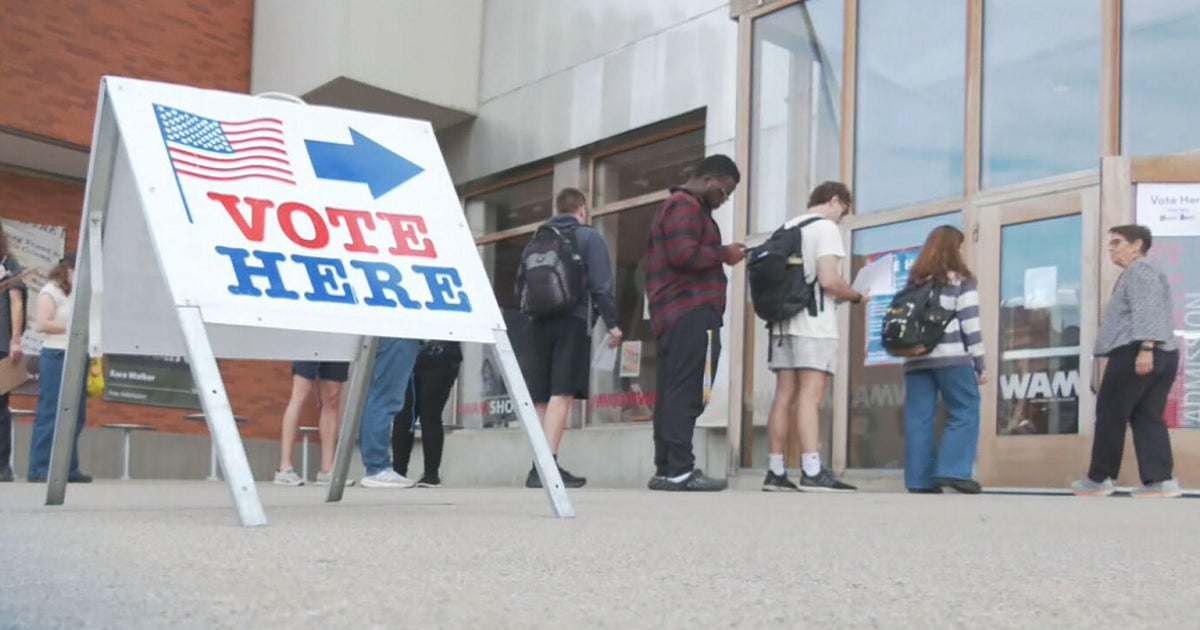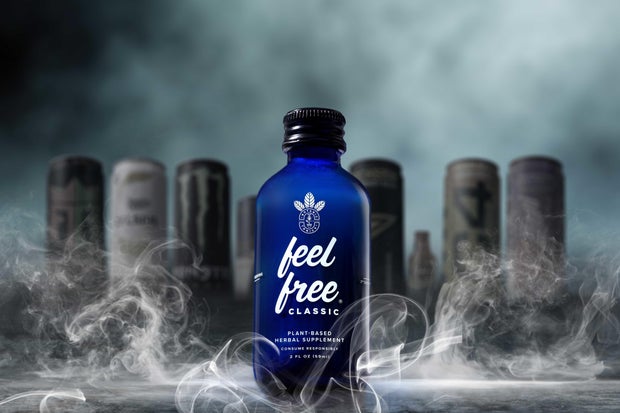CBS News
Voters in 3 red states cast ballots on paid sick leave

St. Louis — Voters in Missouri, Nebraska and Alaska will soon decide whether workers there should be entitled to paid sick leave.
If approved, the ballot measures would allow many workers to accrue paid time off, a benefit supporters say means workers — especially those with low-paying jobs — would no longer have to fear losing wages or possibly the jobs themselves for getting sick. Proponents say such policies benefit the broader public, too, allowing workers to stay home when sick or to care for ill family members to stem the spread of infectious diseases.
But opponents say the measures force new burdens on employers, who should be the ones deciding which benefits are best.
The coronavirus pandemic highlighted gaps in such benefits. At the height of the health crisis, the federal government provided temporary relief for sick workers, but those federal protections ended in 2021.
Fifteen states and the District of Columbia now have laws requiring at least some employers to provide paid sick time, according to the Center for American Progress, a left-leaning think tank based in Washington, D.C. They are largely Democratic-controlled places.
The three sick leave ballot measures up for vote are in Republican-led states. Ballot measures, which are allowed in 24 states, let voters amend state constitutions or enact laws by voting directly on an issue, allowing them to bypass state legislatures. For example, voters ushered in Medicaid expansion in Missouri and Nebraska in 2020 and 2018, respectively, after their legislatures wouldn’t pass it.
Still, as Election Day quickly approaches, the three sick leave ballot initiatives have flown under the radar, unlike higher-profile ballot measures — say, on abortion, which is on the ballot in 10 states, including Missouri and Nebraska.
Campaigns supporting the sick leave initiatives in Alaska, Missouri and Nebraska raked in less than $9 million combined in cash contributions, according to a KFF Health News analysis of state campaign filings as of Oct. 28.
That’s significantly less than Missouri’s ballot measures on abortion and sports betting, which have amassed more than $55 million combined in cash contributions, according to state records. TV ads flood the airwaves on those two measures and yard signs on abortion saturate the region.
Most of the money for the sick leave measures has come from backers outside those three states, the filings show, with the Sixteen Thirty Fund, a D.C.-based advocacy group, being the top contributor to each of the three campaigns. “No one should have to choose between their health and a paycheck,” the group said in a statement.
The group, which funds progressive causes nationwide, does not disclose its donors, but in recent years nonprofits tied to George Soros and Swiss billionaire Hansjörg Wyss have reportedly given to it.
It appears no groups have organized formal campaign committees opposing the sick leave measures.
For Alana Ashmore, 18, paid sick leave would be welcome. The St. Louis woman works two jobs: one as a restaurant server and another at a gym. When she’s too sick to work, she said, she immediately worries about being able to afford her $800 monthly rent and starts thinking: “I better find a way to get money.” She said she plans to vote for the measure.
More than 930,000 Missourians lack paid sick time, like Ashmore, and the measure is expected to benefit 728,000 private-sector workers in the state, according to the Missouri Budget Project, a nonprofit focused on analyzing public policy. Some state or local government workers would not be eligible.
If the measures pass, many workers in these three states could accrue paid time off as they work, earning about a week of paid leave per year. In Missouri and Nebraska, workers for large organizations could earn one hour of paid sick time for every 30 hours worked. To earn one day of paid sick time, they would need to work 40 hours per week for six weeks. In Alaska, eligible workers could accrue a maximum of 56 hours of paid time each year.
In Missouri and Alaska, the measures also seek to raise the minimum wage.
In all three states, the measures have received broad support including from major unions. Jodi Lepaopao, the campaign manager for Paid Sick Leave for Nebraskans, said her campaign has received support from at least 200 businesses, though not from the meatpacking plants whose workers she said stand to gain the most as they often lack paid sick leave.
During the pandemic, meatpacking plants were heavily hit by COVID-19. Nearly 1 in 5 meatpacking plant workers were infected from March to July 2020, “a profound burden of cases unparalleled in any other worker population,” researchers found.
“This is going to be a big win for them, if we can win,” Lepaopao said.
St. Louis-based Generate Health, a nonprofit that supports healthy outcomes for Black moms and their babies, has backed the paid leave proposition in Missouri for both its employees and its clients.
“To have a healthy baby, you have to have a healthy family and, ultimately, a healthy community,” said Lora Gulley, director of advocacy for Generate Health.
But not every employer has thrown support behind the push for paid sick leave.
Missouri’s Chamber of Commerce and Industry opposes the proposition because it would place mandates on employers that it has said would “increase the cost of doing business and increase liability for our state’s employers.“
The National Federation of Independent Business has also opposed paid sick leave requirements, and specifically has come out against the Alaska measure as a threat to small businesses.
Separately, ballot measures can boost voter turnout, said Adam Snipes, director of strategic partnerships at the Ballot Initiative Strategy Center, which works to pass progressive ballot measures around the country. Voters are often galvanized to head to the polls by the issues, causing ripple effects across all races.
“While they might be skeptical of politicians, they are highly participatory when it comes to ballot measures,” Snipes said.
KFF Health News Midwest correspondent Bram Sable-Smith contributed to this article.
KFF Health News is a national newsroom that produces in-depth journalism about health issues and is one of the core operating programs at KFF — the independent source for health policy research, polling and journalism.
CBS News
He thought his heart was in perfect health. An advanced scan showed something alarming.

When Chris Abrunzo was in his early 20s, his father was struck by the kind of heart attack known as a “widow maker.” The severe cardiac events are often fatal, and while Abrunzo’s father survived, it inspired him to take his heart health seriously, since family history is one of the strongest indicators for developing heart disease later in life.
Abrunzo started getting regular cardiac checkups and he made sure to work out frequently and eat well. As the years passed, tests continued to show he was in great health except for some elevated cholesterol that he treated with medication. He had no symptoms of heart disease. In 2023, a family friend told him about a newer, more detailed test that offered a view of the arteries without any invasive procedures.
“I go in thinking I’m going to get a scan and be told ‘You’re doing a great job,'” Abrunzo recalled. “Well, I get scanned, and the scan reveals that I had areas of plaque buildup, many of which would not show up on an echocardiogram or a stress test, but that showed up on this scan. One of those areas was around 70% blocked.”
High blockage in arteries can cause heart attacks. While the blockage Abrunzo found wasn’t in a crucial artery, it was in a place that would be difficult to treat with surgery, so he knew he had to focus on reducing the buildup. He was prescribed more medications, and further adjusted his diet and exercise regimens. During a checkup last month, Abrunzo was told that the blockage was only occluding about 40% of his artery, putting him at far lower risk for a sudden cardiac event.
Chris Abrunzo
“I think this just the ability to look inside there is just something that’s miraculous and probably saved my life, not in the very near future, but probably in my mid-50s,” said Abrunzo, now 47. “It’s like magic.”
What is cardiac CT angiography?
A cardiac CT angiogram is a test that essentially conducts “a CAT scan for the heart,” said Dr. Aeshita Dwivedi, a cardiologist at Northwell Health. The full-body scanner captures 3D images of the heart and the arteries that supply blood to the organ. Some scanners can take the image in less time than it takes a heart to beat. Doctors can study that 3D image for blockages, plaque buildup, and other warning signs for cardiac disease, Dwivedi said.
It’s far more advanced than what more common noninvasive tests, like the echocardiograms and stress tests Abrunzo was doing, can do.
“Usually you have to have greater than a 70% blockage in the arteries to have an abnormality on a stress test,” said interventional cardiologist Dr. Tony DeFrance. “And that’s really kind of a problem, because a lot of times people have echocardiograms, calcium tests, stress tests, and they say ‘Oh, you’re fine, your heart’s strong.’ That probably means they don’t have a 70% blockage. But we’ve found out over the last couple of decades it’s not the 70% blockages that cause the heart attacks. It’s often the 20% and 30% blockages.”
Clear Heart and Lung Imaging
The test can also look at the plaque, or buildup of cholesterol, fat, blood cells and more that can narrow or block arteries. Vulnerable plaque, when found, is often a warning sign for a sudden cardiac event. More than half a million Americans die from such events each year, DeFrance said.
“Vulnerable plaques … are the ones that when they tear or rupture, those cause heart attacks,” DeFrance said. Stable, or calcified, plaque is less harmful, though it may cause chest pain and narrow the heart’s arteries.
Expanding access to cardiac CT angiograms
Cardiac CT angiograms were first used in the early 2000s, said DeFrance, and the past decade has seen an increase in their use. He himself has founded the Society of Cardiovascular CT and trained thousands of physicians on the technology. In 2022, the American College of Cardiology issued guidelines recommending cardiac CT angiography as an evaluation tool for patients complaining of chest pain.
For Kim and Matt Mischo, expanding access to cardiac CT angiograms is personal. Matt Mischo believed he was in perfect health, but Kim, who worked in health care administration, convinced him to get a cardiac CT angiogram after she tested the technology herself during a work trip. She was worried about his family’s history of heart disease, even as he insisted he was in good health and had never had any worrying cardiac exams before. Finally, the active husband and father of four underwent the test — and found that he was on the verge of a massive heart attack, with large blockages in multiple key arteries.
Clear Heart and Lung Imaging
“I thought I was always invincible,” Matt Mischo told CBS News. The news made him scramble to book an appointment with a cardiologist, and he was warned he might need open heart surgery and as many as three stents to avoid a major heart attack. Luckily, he was able to remove the plaque with an atherectomy, a minimally invasive procedure where plaque is removed with a catheter. The experience inspired the couple to open their own imaging center.
Since June, the Clear Heart and Lung Imaging Center has seen more than 300 patients. Kim Mischo estimated that of those hundreds, about 40% have found they had “some level of coronary artery disease.” DeFrance works at the center, helping review the images taken and developing treatment plans for patients.
“The number one killer now, worldwide, is cardiovascular disease,” DeFrance said. “Our current workup doesn’t catch most people … Our current paradigm is missing a lot. Working towards prevention, identifying the disease early so we have many more options, is crucial.”
CBS News
This kratom drink was marketed as an alcohol alternative to be sold over the counter. Some consumers say it led to addiction.

When Jasmine Adeoye, an account manager based in Austin, Texas, decided to stop drinking in June 2022, she turned to a kratom beverage advertised as an alcohol alternative. Within a year and a half, Adeoye said she was addicted to the drink, “Feel Free Classic,” lured by what she calls the company’s deceptive marketing tactics.
The 29-year-old account manager based in Austin, Texas, said her favorite podcasters promoted the drink, which the company Botanic Tonics manufactures and sells, as “a miracle” beverage that could help people trying to overcome addiction and embrace sobriety. Having struggled with binge drinking in the past, Adeoye was intrigued.
Jasmine Adeoye
She said she was unaware the drink contained kratom, a plant native to Southeast Asia that can produce feelings of energy, ease anxiety and reduce pain— but carries a risk of addiction, seizures, and very rarely, death. Since kratom is unregulated in the U.S., some products are sold in highly concentrated forms and could contain contaminants like heavy metals and harmful bacteria, according to the National Institute on Drug Abuse.
Eventually, Adeoye says she was drinking up to 10 two-ounce bottles a day and spending around $100 daily. The company recommends consumers drink no more than a bottle daily. By then, she said, her life revolved around the drink and she needed to make sure she had access to it wherever she went.
A drink advertised an #alcoholalternative
Then came the withdrawals, which some consumers compare on social media to withdrawing from an opioid.
“When I would wake up, I’d be ‘dope sick’, essentially, and need to go straight to the gas station and go buy Feel Free to immediately feel better,” Adeoye said.
This past March, after one bout of withdrawal symptoms was so severe, she sought medical care close to her home in Austin. She hadn’t told the doctors she was struggling with kratom use, she said, and they chalked her symptoms up to a virus.
“All of a sudden, it just spirals out of control and you get to a point where you feel like you can’t live without them,” she said. “And you become just a shell of a person.”
Adeoye, who was trying to stay sober from alcohol, said she unwittingly found herself in the throes of addiction — and she’s not the only one.
A forum on the social network Reddit called r/quittingkratom has more than 45,000 members while a forum dedicated exclusively to quitting Feel Free has nearly 3,000. There are podcasts, support groups and books dedicated to quitting kratom.
In 2023, a class action lawsuit was filed in California against Botanic Tonics alleging that the drink was advertised as a safe alternative to alcohol. The company used social media to reach its “desired customer base,” the lawsuit states, which included individuals who had struggled with addiction. According to the 2023 suit, Botanic Tonics posted over a thousand advertisements on Instagram using the hashtag #alcoholalternative. The suit also says that advertisements on Instagram omitted any mention of kratom or potential side effects.
CBS News spoke with another consumer about their experience with Feel Free Classic who also described the drink’s appeal as an alcohol alternative, and said they had become addicted to the beverage and eventually experienced withdrawal symptoms.
AP
The company told CBS News in a statement it “fell short of the high standards of transparency and consumer education that our company now champions.” And they’ve taken steps for “continuous improvement and doing what’s right for consumers.”
Botanic Tonics said they’d implemented changes including enhanced labeling, raised age restrictions to 21 and over, investing in clinical research, expanded consumer education resources and maintained rigorous manufacturing standards in FDA-registered, cGMP-certified facilities.
CBS News found through an internet search that Feel Free Classic was featured in at least 22 podcasts. The company’s founder, JW Ross, has spoken openly with podcast hosts about his previous struggles with alcohol, and how Feel Free Classic was developed as an alternative.
“We make a powerful product. That product works for a lot of people, but it doesn’t work for everyone,” Botanic Tonics said in a statement to CBS News. “Our priority as a company is making sure it gets into the right hands, which is why it’s so important for us to focus on informing people who have issues with substance abuse that it isn’t for them.”
Upon the lawsuit’s settlement in September, Botanic Tonics said it would issue clear labels and warnings — but around the time Adeoye began taking Feel Free Classic and ultimately became hooked, the website advertised the drinks to be “used for productivity enhancement or as a healthy alcohol alternative.” As recently as January 2024, a banner on the website read “cheers to a dry January.”
Kratom risks not fully known by the public
Kratom is used by an estimated 2 million to 15 million Americans. As kratom’s use rises in the U.S., so do the risks. The FDA warns the public against consuming kratom for medical use due to the risk of liver toxicity, seizures and substance use disorder; the DEA classifies it as a “drug of concern” and warns that it can lead to addiction. Botanic Tonics said, “while leaf kratom can lead to physical dependence, its risk profile is significantly lower compared to many other commonly used substances.” The company pointed CBS News to comparative safety practices and FDA studies available on the Global Kratom Coalition website, an advocacy group promoting the use of kratom.
It is rare to overdose from kratom alone – a vast majority of the overdoses typically include an accompanying substance like alcohol or cocaine. But it does happen.
Wrongful death suits in Florida, Georgia, Texas, Oregon, Pennsylvania and Washington followed. The family of a Florida woman whose death in 2021 was attributed to a chemical compound found in kratom was awarded $11 million in a wrongful death lawsuit. Last year, $2.5 million was awarded in the first kratom wrongful death trial in the United States. A kratom company based in Washington State was found liable for negligence among other claims relating to the death of a 39-year-old who was found dead in his living room after consuming kratom.
Despite kratom’s potential for addiction and subsequent withdrawal symptoms, it has gained a reputation among the online sobriety community as a method to self-manage opioid withdrawal — which has not yet been scientifically proven.
Adeoye said even though information about the dangers of kratom was readily available, she didn’t understand the associated risks. If she could go back two years, she said, she would have researched the ingredients “as heavily as possible.”
“To my knowledge, it was something that was similar to matcha, like a tea or a coffee,” Adeoye said. “So, thought it was completely harmless.”
Scrutiny grows around kratom marketing
Botanic Tonics isn’t the only kratom product company that has come under scrutiny.
In July, the FDA issued a warning advising consumers against using OPMS Black Liquid Kratom, which “has been linked to serious adverse health effects, including death,” according to the agency. Shot of Joy, which sells kratom shots, was issued a warning letter by the FDA in 2023 stating the company markets their products for the “treatment or cure of opioid addiction”— a claim the FDA says has not been determined by the agency. In a series of Instagram advertisements viewed by CBS News, Shot of Joy promotes their beverage as an alcohol alternative. The FDA has issued warning letters to ten companies that sell kratom products between 2019 and 2023.
After nearly two years of silently struggling, Adeoye told her mom, and then her husband following that medical visit. She was ready to quit.
She spent the next few days detoxing at home.
“I couldn’t eat anything. My mom had to force me to eat,” she said, noting that she had to have someone with her “around the clock.”
Though the physical withdrawals tapered off after about three days she says it took six months to feel regulated mentally.
“It’s very depressing to feel this emptiness,” Adeoye said of quitting kratom. “You feel like life is never going to be the same.”
Botanic Tonics’ FAQ page now includes a section addressing past marketing practices.
“Our marketing strategy has changed dramatically in the past year, but not as a reaction to the lawsuit filing,” the statement reads. “As our business has grown, specifically in retail, we’ve shifted marketing focus accordingly.”
CBS News
National Ballet of Ukraine completes first U.S. tour in decades

Watch CBS News
Be the first to know
Get browser notifications for breaking news, live events, and exclusive reporting.












